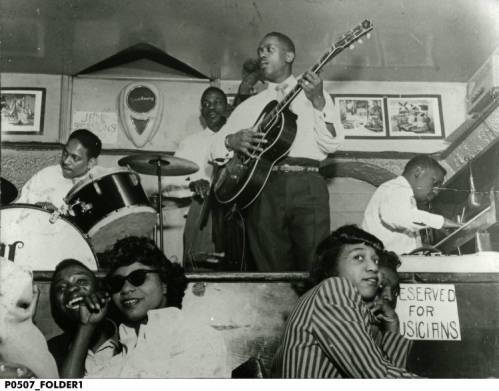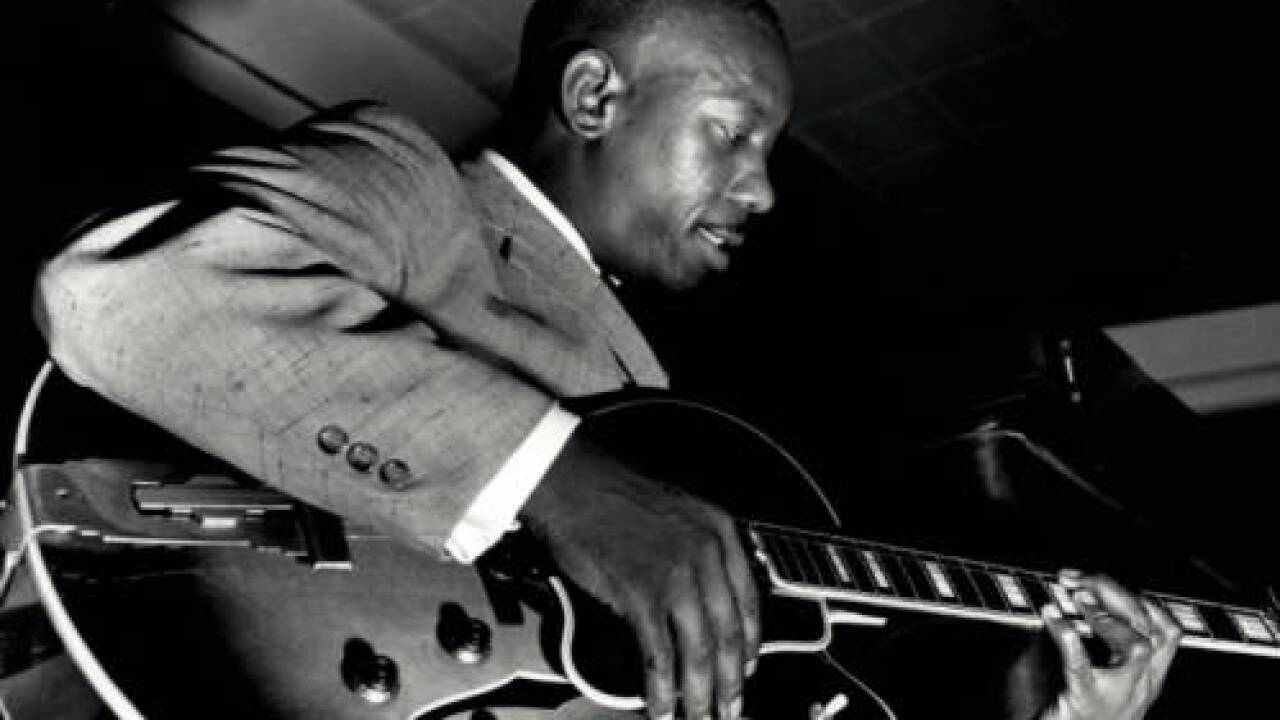INDIANAPOLIS — Wes Montgomery’s talent took him around the world, but he always came back to Indianapolis.
Montgomery, born March 6, 1923, is renowned as one of the most influential jazz guitarists in history, but he got a late start in music.
It was not until he was 19 that Montgomery first picked up a guitar and taught himself to play — not with a pick, but his thumb, because it was quieter and did not disturb his wife and neighbors, said WFIU jazz director David Brent Johnson.
“He really liked the sound that he got from playing with his thumb,” Johnson said. “It did give him a unique tone because most guitarists were playing with their picks.”

Throughout the 1950s, Montgomery worked days at Polk Sanitary Milk Company on the city’s near east side to support his wife and seven children. Then, many times with his brothers Buddy and Monk, he took his talent at night to the city’s jazz clubs.
“What I wanted to do didn’t matter as much as what I had to do,” Montgomery told DownBeat magazine in 1968.
Montgomery played a starring role in the 1950s Indianapolis jazz scene, along with musicians such as David Baker, Freddie Hubbard, Slide Hampton and J.J. Johnson. Indiana Avenue was the epicenter of the city’s jazz world with more than two dozen clubs spanning its eight blocks.
“Most of the big, well-known jazz orchestras came to Indianapolis, they came to Indiana Avenue,” Thomas Ridley, 99, said. “We had a lot of homegrown musicians, very good musicians, who did not want to travel. They stayed here and they performed in the clubs.”
Ridley has lived in Indianapolis most of his life, aside his time in the military during World War II. He grew up two blocks away from Indiana Avenue and remembers seeing Montgomery and fellow jazz greats, such as Duke Ellington, play in its clubs.
“All of them came here. They came to the clubs here,” Ridley said. “There was just entertainment going on regularly every day.”

Montgomery’s big break nationally came in 1959 when the jazz saxophonist Cannonball Adderley saw him play at the Missile Room, an after-hours club on Indiana Avenue. Johnson recounted a story of Adderley unsuccessfully attempting to find a phone at 3 a.m. to call a producer at New York’s Riverside Records with a plea to sign Montgomery to a record deal.
Adderley finally got through the next morning, and, Johnson said, “that really kick-started (Montgomery’s) career in the jazz world as a name unto himself.”
Montgomery’s influence spread throughout his career. Johnson explained that Montgomery’s technique for constructing a jazz solo involved starting with single notes and building up to octaves and chords.
“It ended up having an impact on not just jazz musicians, but pop-rock musicians, R&B musicians,” Johnson said. “He had a lot of fans in the music world.”

Recognition followed. According to Montgomery’s obituary in the Indianapolis Recorder, DownBeat named him the best jazz guitarist five times in the 1960s, while Playboy gave him the honor six times.
Montgomery won two Grammy Awards, including in 1966 for “Best Instrumental Jazz Performance” recognizing his album “Goin’ Out of My Head.”
And then, with his album “A Day in the Life” still at the top of the Billboard charts, he died from a heart attack on June 15, 1968, suffered at his family’s home near Butler University. He was only 45, and the enduring question is what Montgomery might have accomplished had he lived longer.
“I think his reputation would have only grown in whatever he was doing,” Johnson said. “I think he would have continued to gain commercial popularity. … Certainly, a joyous player with just a lot of verve in his music, and I think that again accounts for why he was just getting more and more popular when he died.”

Even now, more than a half-century after his death, Wes Montgomery continues to fascinate jazz fans.
A 2012 album titled “Echoes of Indiana Avenue” helped produce a revival of interest in Montgomery, Indiana Avenue and the Indianapolis jazz scene. The album features previously unknown nightclub and studio recordings from the 1950s.
Montgomery’s story will reach a new audience in 2023. A documentary produced by Jukeboxer Productions titled “Wes Bound” is planned to coincide with the 100th anniversary of his birth.
The first-ever documentary made about Montgomery will feature footage from 14 reels of 8mm film provided by his youngest son, Robert. The film is scheduled to debut on the Bloomington public television station WTIU.
In a trailer for the film, the guitarist Lee Ritenour summed up Montgomery’s standing in the jazz world: “What Coltrane is to the saxophone, Wes Montgomery is to the guitar.”
Contact WRTV Real-Time Editor Daniel Bradley at daniel.bradley@wrtv.com and follow him on Twitter @dcbradley.



